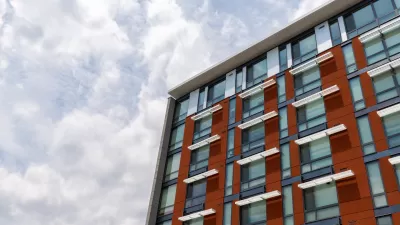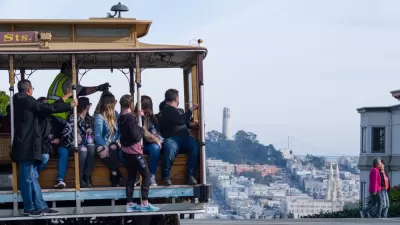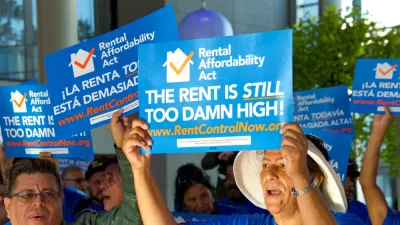In California, rent control continues to be a hotly contested issue at both the local and state levels.
Liam Dillon traces the fight for rent control in the Silicon Valley city of Mountain View. After Mountain View voters passed a 2016 ballot initiative to control rent hikes, landlords launched an unsuccessful legal attempt to have it overturned. Then they tried to put another measure on the November ballot:
Their proposed initiative would limit rent control to households making less than the city’s median income, and suspend the system if the city had too many vacant rentals. Under the standard, rent control would only be in effect if fewer than 3% of rental units in the city were vacant — a level that hasn’t been reached since 2012, per U.S. Census data.
They were not able to get it on the ballot this year, so they are looking to 2020. In the meantime, California voters in November will decide on a state initiative, Proposition 10, which seeks to repeal the Costa-Hawkins Rental Housing Act. The law stymied most types of rent control by limiting it to buildings constructed before 1995, excluding single-family homes, and freezing rent control in some cities.
As the Proposition 10 battle rages on, rent control remains in place in Mountain View. “The city limits annual rent hikes in those apartments to an inflation figure set by the rent board the initiative established, and landlords are able to petition the board for larger increases to finance improvements,” reports Dillon.
For some renters, rent control allowed them to stay in Mountain View when otherwise they would have been priced out. Opponents say that landlords are more inclined to sell their properties to developers. But, says Dillon, the data do not fully support this argument or the claims that rent control will cause new housing construction to decrease.
FULL STORY: What a rent control fight in Silicon Valley could mean for the rest of California

Planetizen Federal Action Tracker
A weekly monitor of how Trump’s orders and actions are impacting planners and planning in America.

Restaurant Patios Were a Pandemic Win — Why Were They so Hard to Keep?
Social distancing requirements and changes in travel patterns prompted cities to pilot new uses for street and sidewalk space. Then it got complicated.

Map: Where Senate Republicans Want to Sell Your Public Lands
For public land advocates, the Senate Republicans’ proposal to sell millions of acres of public land in the West is “the biggest fight of their careers.”

Maui's Vacation Rental Debate Turns Ugly
Verbal attacks, misinformation campaigns and fistfights plague a high-stakes debate to convert thousands of vacation rentals into long-term housing.

San Francisco Suspends Traffic Calming Amidst Record Deaths
Citing “a challenging fiscal landscape,” the city will cease the program on the heels of 42 traffic deaths, including 24 pedestrians.

California Homeless Arrests, Citations Spike After Ruling
An investigation reveals that anti-homeless actions increased up to 500% after Grants Pass v. Johnson — even in cities claiming no policy change.
Urban Design for Planners 1: Software Tools
This six-course series explores essential urban design concepts using open source software and equips planners with the tools they need to participate fully in the urban design process.
Planning for Universal Design
Learn the tools for implementing Universal Design in planning regulations.
Heyer Gruel & Associates PA
JM Goldson LLC
Custer County Colorado
City of Camden Redevelopment Agency
City of Astoria
Transportation Research & Education Center (TREC) at Portland State University
Camden Redevelopment Agency
City of Claremont
Municipality of Princeton (NJ)





























